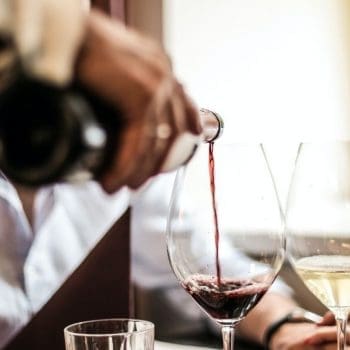 We have all heard the basic rules for finding the right match for our dish: White wine goes with fish and white meat, and red wine goes with red meat. That’s all we need to know, or at least, that’s what we think we know.
We have all heard the basic rules for finding the right match for our dish: White wine goes with fish and white meat, and red wine goes with red meat. That’s all we need to know, or at least, that’s what we think we know.
The truth is, it’s really not that simple, but we have Sommeliers and other wine professionals to tell us what the perfect wine choice should be, right? Well, to put it simply, no. Gone are the days of food and wine matching as we approach an era of guest empowerment.
The magic of a great dining experience
Wine industry professionals in restaurants are beginning to load guests with knowledge in order for them to make the right wine decision for themselves, rather than us making a choice for them. There will always be people who enjoy the luxurious feeling of a hands-off dining out experience, however, we are seeing more guest satisfaction when a guest feels as though they have been part of an interactive experience, and bonus points when they feel as though they have learned something. The topic of personalisation remains prominent as restaurant guests want to manage their own experience. They don’t want the restaurant to make decisions for them. Diners are also placing more importance on the food and wine experience as a whole. The food of a particular establishment is no longer always the element that draws in a customer base.
Thinking beyond flavour
The Wine and Spirits Educational Trust (WSET) is adamant that we should be looking at how the flavours in food and wine interact with each other, rather than searching for a “perfect” match. More specifically, we should be considering the impact that the food will have on the wine. For example, consider when you have a sip of orange juice just after you have brushed your teeth. The orange juice has not changed, but your perception of it has. Salt, acidity, sugar, fat, chilli, and even high levels of umami in a dish will most often cause one to perceive the wine as tasting different, and not the other way around. By relaying this knowledge to our guests, we are giving them an element of control over their experience and empowering them to make their own decisions with our guidance.
It is important to acknowledge that everyone has different tastes, and there should always be an element of palate “calibration”. That is, taking a moment to understand the palate of the guest by asking a few questions. For example, some will be highly sensitive to chilli, in which case a light, fruity, and subtly sweet wine would be most suitable. Others might love a hit of chilli, and so a higher alcohol wine would help to turn up the heat. Once we understand their palate, we can then give them the knowledge they need.
Our role in the food and wine experience
After all, guest empowerment is a double-edged sword. The guest wants to control their experience and to make decisions, however, if it results in a bad decision, the blame still falls on us. It is up to us to be the safety net, and to guide the guest in the best direction while still feeling in control. By doing this, we are creating an environment where they are brought into the control room with us when it comes to wine, and in turn, empowering them in their restaurant experience as a whole.
About the author
 Ashley Kerr is the F&B Manager, Hospitality at at Blue Mountains International Hotel Management School.
Ashley Kerr is the F&B Manager, Hospitality at at Blue Mountains International Hotel Management School.



















